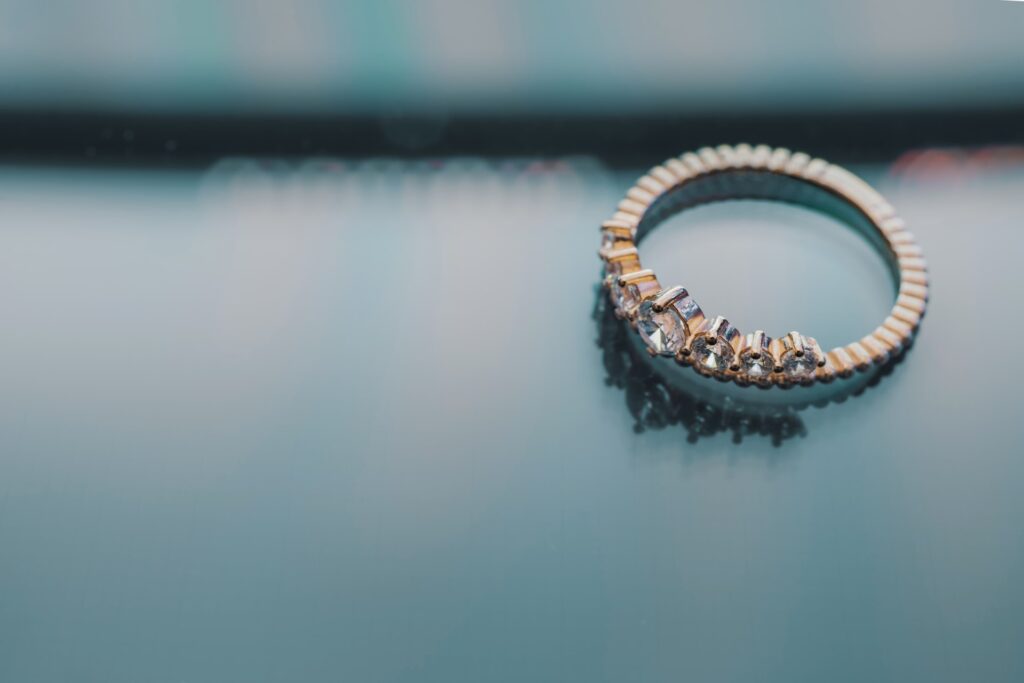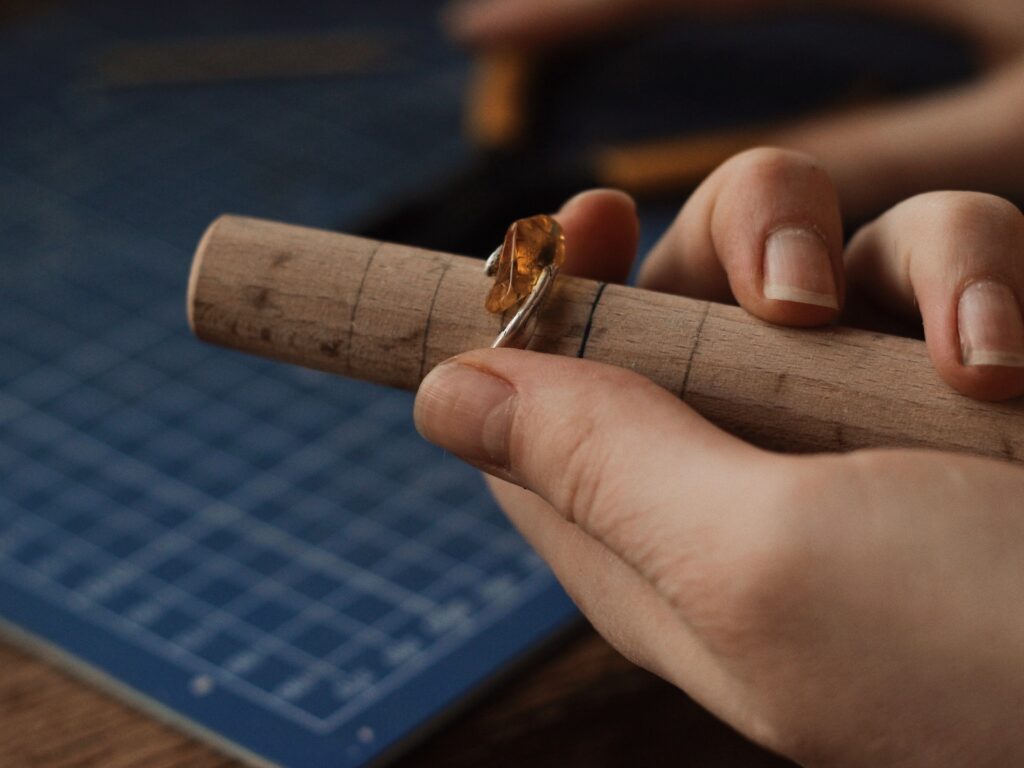Worried about potential marks when resizing your cherished ring? In the following discussion, we’ll talk about all possible risks involved with ring resizing and how assistance from a competent jeweler can make the process seamless and successful.
So let’s find the truth about ring resizing and ensure a successful transformation of your ring!
Do check out my article on the subject of ring looking different after resizing.
Ring Resizing: Does it Leave A Mark?
Yes, resizing can leave a mark on the ring, especially if it involves significant size changes or the ring features complex designs. To reduce the risk of damage to the ring, choosing a competent jeweler for size alteration is important.
Professional jewelers are equipped with the proper equipment and technical knowledge to reduce the risk of damage to the ring while resizing. Additionally, in the rare event that mishandling does occur, they have the resources and skills to repair any damage to the ring.
If you are worried that this might decrease the value of the ring, you should definitely check out my article “Does Resizing a Ring Devalue It?” where I discuss the subject in detail.

Potential Marks and Their Causes
If you’re wondering what kind of marks you can possibly find on a ring after resizing, below are some of the common types that you can expect to see:
Scratches
A jeweler may use several tools and equipment to increase or decrease the size of a ring. During the process, it is not uncommon for the tools to come in contact with the ring and leave scratches or scuffs on its surface.
Generally, these scratches or scuffs marks are easy to remove and are often buffed out by the jeweler while polishing the ring. However, in case the scratch marks on your ring were left neglected, get in touch with the concerned jeweler for appropriate restoration of the ring.
Rough handling can even the stones to get scratched or chipped. If this is the case, read my article Stone Looks Different After Resizing to find out the causes and what to do in each case.
Soldering Marks
In some cases, after getting your ring resized, you may notice the appearance of a thin line or small dots along the ring’s shank. These marks occur as a result of soldering, which is a process used to fuse metal parts together.
When resizing a ring, jewelers often cut the shank and add/remove metal to achieve the desired ring size. This process is followed by soldering two ends of the ring, which can leave behind faint marks on the band.
Fortunately, proper polishing and finishing techniques can make the soldering marks on the ring invisible to the naked eye.
Resizing Can Ruin Engravings, Textures
During the resizing process, rings with textures, engravings, or intricate patterns may get distorted or lose some of their details. This usually happens when the ring is cut and fused together after adding/removing metal to adjust the size.
Prong Damage
Most rings feature prong-set stones as embellishments. As a result of resizing, prongs can become loose or bent, leading to a faulty setting incapable of holding the stone in place.
Chipped Gemstones
Some delicate gemstones, such as emeralds, are highly prone to damage due to their fragile nature. During resizing, if the stones are mishandled or subjected to stress or pressure, they can easily crack or break.
Addressing Marks or Damage: What to Do After Ring Resizing
If you notice any damage or marks on your ring after resizing it, don’t worry; you can still restore it to as good as new. Here’s what you can do:
Get in touch with your jeweler
Contact the jeweler who resized your ring and provide them with the details of any damage you notice.
Request a refinishing
A reputable jeweler should be willing to assist you in case of any issue. Ask them for a repair or refinishing of the ring to restore its original appearance.
Tips for Successful Ring Resizing
Here are a few tips to to consider in case you’re deciding to get your ring resized:
Consult a Professional Jeweler
Always go for a reliable and skillful jeweler equipped with all the necessary tools and resources to ensure a seamless ring resizing experience. Communicate your expectations and any other concerns you may have regarding the process.
Take an Accurate Measurement
Provide an accurate measurement of your ring size to the jeweler. Better yet, have your ring size examined by the jeweler to avoid multiple adjustments later.
Alternatively, you can use a handy ring size measurement tool, like this one from Amazon, and take an accurate measurement of your finger yourself.

What Rings Can Not be Resized?
It is important to remember that resizing all types of rings doesn’t render the same results. Some metal types, like titanium, tungsten, and rose gold, are more challenging to work with due to their unique properties. Thus, you may experience certain limitations when it comes to resizing rings made out of these metals.
Conclusion
While resizing can leave marks on a ring, choosing a professional jeweler for the job can help reduce the potential risk of damage to the ring to a great extent. Most marks, like scratches and scuffs, are superficial and can be easily treated with appropriate finishing techniques. Skilled jewelers can fix even more challenging traces of resizing, such as soldering marks. So yes, risks are involved, but with the right expertise and resources, your ring can be restored to its former glory!
Check out some of my other equally helpful ring guides too:
- Does Resizing a Ring Devalue It?
- Stone Looks Different After Resizing- Here’s Why and What To Do
- Ring Looks Different After Resizing- Here’s Why and What To Do
- Does Resizing a Ring Make Diamonds Fall Out?
- Stone Fell Out of Ring and Got Lost: What to Do Next
- Can You Add Gold to a Ring to Make it Thicker?
- How Much Does it Cost to Melt a Ring and Make a New One?